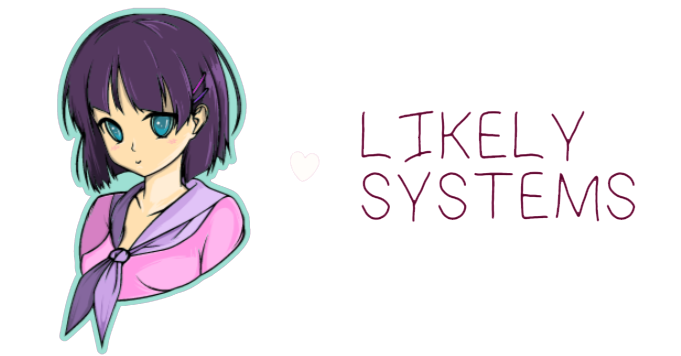A year on from its initial release on PlayStation 5, Linux and Steam (for Windows PC), and the pixel-art styled side-scrolling visual novel Until Then finds a new home on the Nintendo Switch. Intrigued by its premise I decided to take a look at this Nintendo Switch version to see what it had to offer, and I was quite surprised by what it did.
Developed by Polychroma Games, and published globally by Maximum Entertainment, Until Then is described as a coming-of-age narrative experience set within the boundaries of a world recovering from a global catastrophe. In the game players control Mark Borja, a seemingly laid back high school student with a creative mind, as he navigates daily life, relationships, and the struggles of growing up. It’s a seemingly simple story, but its one that immerses you in a rather clever way.
How does it immerse you in a clever way? By doing things differently. Until Then isn’t simply an interactive visual novel in the form of walking to your next scene and watching dialogue play out. Instead, Mark can interact with people, animals, machines and even social media posts online. This simple, and clever, addition, makes it feel that the world you are playing in is alive; even more so with background characters going about their daily lives as well. But that’s not all, as other little things, such as interacting with the USB drive before giving your presentation in class, or buying a train ticket at the machine, give the game a little more personality than others. Very simple, but effective.
With that being said, how exactly is the game played? Is it a visual novel, is it a point and click adventure? Well, kind of. Some (including myself) have described Until Then as a visual novel, but it’s not entirely true even though it would appeal to fans of the genre. The game is played by moving Mark left and right across the screen and using the A button to interact with items of interest. This play style reminds me of The Coma, but in a more limited capacity.
At set points the game will transition into a dialogue sequence in which you will see speech boxes appear above, or near, the character that is talking. Unlike visual novels you won’t see a full visual of the character, and instead it will just display the character in whatever setting they find themselves in with a speech bubble. Sometimes this will be the same as when you are walking, other times it will be a specially crafted scene.
Regardless, Conversations move forward by simply pressing the A button, and occasionally you’ll need to respond which will change the course of dialogue slightly. Interestingly different buttons will represent different responses, so you can’t just mash the same button repeatedly either. For the most part it seems conversations, after the initial reaction of your response, won’t differ too much so you won’t exactly need to replay the same sequences again, that is unless you really want to.
When it comes to interacting with online social media posts, or other aspects of the game, then things get slightly different, and you’ll need to use different buttons to navigate them. Social Media posts for instance will see a small box highlighting the “like” and “comment” buttons as well as the post itself. Pressing the A button will then proceed to take an action, whether it be to read the article, like it or comment on it, and the B button is used to go back.
Naturally the analog stick (or D-Pad) is used to navigate through these posts. Other interactive parts of the game meanwhile, such as buying a train ticket or the various challenges/mini-games you’ll encounter as part of the story, will require a bit more effort. For instance to buy a train ticket will see you use the analog stick like a mouse, as you’ll need to move the cursor it displays over to the relevant buttons. Mini-games within Until Then also have their own special rules to follow, but for the most part the A button is used.
Controls and play style aside another unique aspect of Until Then is its visual style. On the surface it looks like sprites, but it seems to be pixel art in a mixture of 2D and 3D spaces. From one perspective the visuals could be seen as limited, but somehow this unique blend of pixel-art with 2D & 3D designs make the characters, and the world their inhabit, feel alive. This reigns true on smaller screens, such as the Nintendo Switch screen, rather than on big TV screens that seem to blur the visuals. As such I had more enjoyment experiencing this game in handheld mode, than I did playing on a larger screen.
Of course, all this is well and good, but aside from the basic story, controls, and visual styles what can one expect to receive from this game and what are my experiences with it? Well, sadly, this Nintendo Switch version of the game continuously crashed on me at the exact same point, during the Night Chat scene in Chapter 1, while playing on a Nintendo Switch 2 console.
I tried reinstalling the game, transferring to internal storage, using different profiles, and even using the scene select from the main menu, but alas it would crash every single time. As a result I could not progress further on my Nintendo Switch 2, which was surprising as the game is listed as compatible on the Nintendo eShop.
Fortunately, I did still have my Nintendo Switch OLED console, and I was able to transfer my save data (using the Nintendo Switch Online backup functionality) and resume playing without issues on my Nintendo Switch OLED Console. So, be warned. If you plan on playing Until Then on a Nintendo Switch 2 console then you may experience similar issues, which is a real same, but it does seem that Maximum Entertainment will be looking in to it.
These crashes weren’t the only concerning nature of this Nintendo Switch port of the game, as there were other abnormalities I witnessed during my (short) playtime with the game. To start with, the game doesn’t feel truly optimized for the Nintendo Switch, as the frame rate will drop randomly when trying to load something into the scene (like the train arriving at the station). Additionally between scene changes there will be a long pause on a black screen before the next scene appears, despite the fact that it should have finished loading.
Finally, the menu interface feels very basic and can be difficult to use or view depending on your TV set up. In my case navigating the main menu and pause menu was difficult as I couldn’t see the difference between what was being selected, however this wasn’t an issue when watching the video I was recording back on my monitor (due to the monitors increased brightness).
There are also basic visual novel functions that are missing, such as the ability to manually save, skip text, read past text, auto-play text or even voice over for spoken dialogue. Understandably the ability to read past text may not be viable on a title such as this, as text does appear in many different forms, but it would be a nice feature to look back at dialogue previously read. The same could also apply to voice-over dialogue for text, as this would have added more immersion to the experience.
The lack of a manual save option, as well as the ability to auto-play text or skip text, is also concerning, as it does mean you’ll have to replay a scene and sit through text if you decide to quit before reaching a save point. Instead of a manual save the game automatically saves at the beginning of each scene, and you can revisit past scenes by selecting a scene from the main menu.
Despite the issues playing the game, and the limited functionality, Until Then offers something different to other titles in the genre. A unique visual treat, with a compelling story that evolves the further you progress. While my time with Until Then was initially cut short I did find myself wanting to immerse myself further within the story, mostly to see where it would go as it definitely felt like a slow build to something interesting. That being said, five chapters, with three variations of it, look to be on offer with each having different scenes that follows Marks life and the mysteries surrounding his friends after the effects of the catastrophe.
If you are looking for a different type of interactive story to play, then Until Then is definitely worth considering. For the time being at least, the game is available digitally for Nintendo Switch, PlayStation 5, Linux, and Windows PC worldwide. A Physical version for the Nintendo Switch is also planned for release in December 2025. Further details can be found on the official website.
Launch Trailer:
Gameplay:




